Hyundai i30 vs Suzuki Swace – Which model is better for everyday use?
Everyday use, family trips or long-distance drives – here’s where the differences show.
Discover whether Hyundai i30 or Suzuki Swace fits your lifestyle better.
Costs and Efficiency:
Price and efficiency are often the first things buyers look at. Here it becomes clear which model has the long-term edge – whether at the pump, the plug, or in purchase price.
Hyundai i30 has a distinct advantage in terms of price – it starts at 24000 £, while the Suzuki Swace costs 31900 £. That’s a price difference of around 7886 £.
Fuel consumption also shows a difference: Suzuki Swace manages with 4.50 L and is therefore clearly perceptible more efficient than the Hyundai i30 with 5.70 L. The difference is about 1.20 L per 100 km.
Engine and Performance:
Power, torque and acceleration are the classic benchmarks for car enthusiasts – and here, some clear differences start to show.
Both models deliver identical power – 140 HP each.
In acceleration from 0 to 100 km/h, the Suzuki Swace is minimal quicker – completing the sprint in 9.40 s, while the Hyundai i30 takes 9.60 s. That’s about 0.20 s faster.
In terms of top speed, the Hyundai i30 performs slight better – reaching 197 km/h, while the Suzuki Swace tops out at 180 km/h. The difference is around 17 km/h.
Space and Everyday Use:
Cabin size, boot volume and payload all play a role in everyday practicality. Here, comfort and flexibility make the difference.
Both vehicles offer seating for 5 people.
In curb weight, Hyundai i30 is somewhat lighter – 1291 kg compared to 1475 kg. The difference is around 184 kg.
In terms of boot space, the Suzuki Swace offers evident more room – 596 L compared to 395 L. That’s a difference of about 201 L.
In maximum load capacity, the Suzuki Swace performs a bit better – up to 1606 L, which is about 305 L more than the Hyundai i30.
When it comes to payload, Hyundai i30 noticeable takes the win – 509 kg compared to 360 kg. That’s a difference of about 149 kg.
Who wins the race?
The Suzuki Swace proves to be edges ahead and therefore becomes our DriveDuel Champion!
Suzuki Swace is the better all-rounder in this comparison.
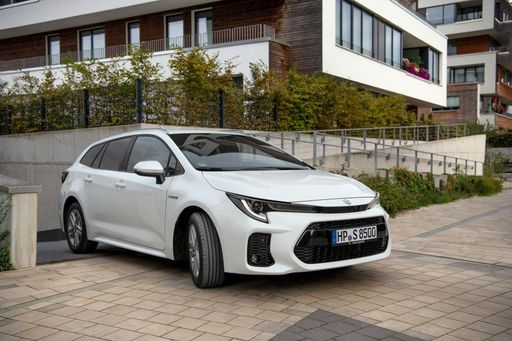
Suzuki Swace
Hyundai i30
The Hyundai i30 stands out in the hatchback segment with its sleek design and modern features. It offers a comfortable ride with a well-crafted interior that caters to both driver and passengers. With its emphasis on safety and technology, the i30 provides a balanced driving experience suitable for urban and suburban environments.
details @ hyundai.news
@ hyundai.news
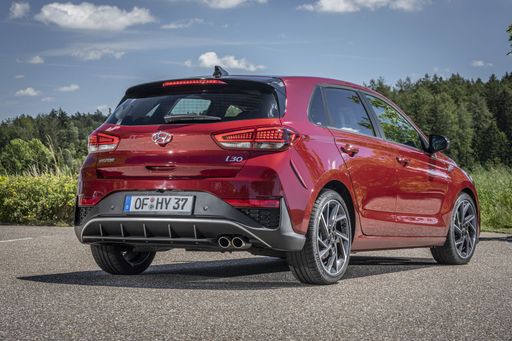 @ hyundai.news
@ hyundai.news
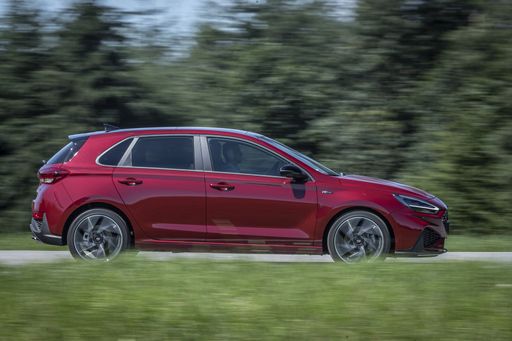 @ hyundai.news
@ hyundai.news
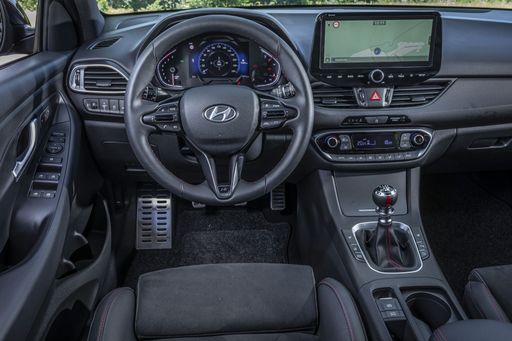 @ hyundai.news
@ hyundai.news
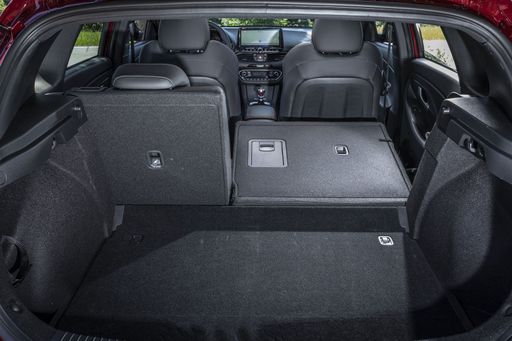 @ hyundai.news
@ hyundai.news
Suzuki Swace
The Suzuki Swace presents itself as a stylish hybrid estate car, combining practicality with eco-friendly credentials. Its sleek design is complemented by a comfortable and spacious interior, ideal for families and long journeys. The Swace's impressive fuel efficiency and advanced safety features make it a standout choice for those looking to merge economy with everyday usability.
details @ Suzuki
@ Suzuki
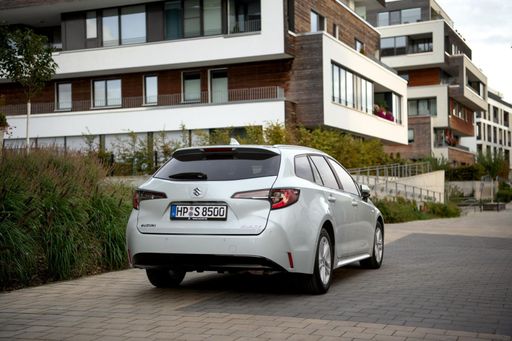 @ Suzuki
@ Suzuki
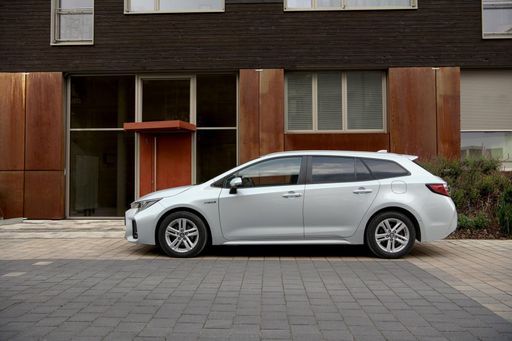 @ Suzuki
@ Suzuki
 @ Suzuki
@ Suzuki
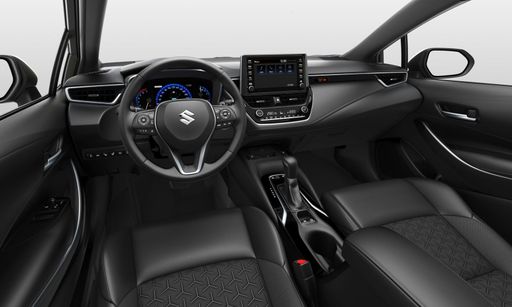 @ Suzuki
@ Suzuki

|

|
|
|
|
Costs and Consumption |
|
|---|---|
|
Price
24000 - 29300 £
|
Price
31900 £
|
|
Consumption L/100km
5.7 - 6 L
|
Consumption L/100km
4.50 L
|
|
Consumption kWh/100km
-
|
Consumption kWh/100km
-
|
|
Electric Range
-
|
Electric Range
-
|
|
Battery Capacity
-
|
Battery Capacity
-
|
|
co2
130 - 136 g/km
|
co2
102 g/km
|
|
Fuel tank capacity
50 L
|
Fuel tank capacity
43 L
|
Dimensions and Body |
|
|---|---|
|
Body Type
Hatchback
|
Body Type
Estate
|
|
Seats
5
|
Seats
5
|
|
Doors
5
|
Doors
5
|
|
Curb weight
1291 - 1407 kg
|
Curb weight
1475 kg
|
|
Trunk capacity
395 L
|
Trunk capacity
596 L
|
|
Length
4340 mm
|
Length
4655 mm
|
|
Width
1795 mm
|
Width
1790 mm
|
|
Height
1455 mm
|
Height
1460 mm
|
|
Max trunk capacity
1301 L
|
Max trunk capacity
1606 L
|
|
Payload
463 - 509 kg
|
Payload
360 kg
|
Engine and Performance |
|
|---|---|
|
Engine Type
Petrol, Petrol MHEV
|
Engine Type
Full Hybrid
|
|
Transmission
Manuel, Automatic
|
Transmission
Automatic
|
|
Transmission Detail
Manual Gearbox, Dual-Clutch Automatic
|
Transmission Detail
CVT
|
|
Drive Type
Front-Wheel Drive
|
Drive Type
Front-Wheel Drive
|
|
Power HP
100 - 140 HP
|
Power HP
140 HP
|
|
Acceleration 0-100km/h
9.6 - 13.1 s
|
Acceleration 0-100km/h
9.40 s
|
|
Max Speed
178 - 197 km/h
|
Max Speed
180 km/h
|
|
Torque
172 - 253 Nm
|
Torque
-
|
|
Number of Cylinders
3 - 4
|
Number of Cylinders
4
|
|
Power kW
74 - 103 kW
|
Power kW
103 kW
|
|
Engine capacity
998 - 1482 cm3
|
Engine capacity
1798 cm3
|
General |
|
|---|---|
|
Model Year
2024
|
Model Year
2024
|
|
CO2 Efficiency Class
D, E
|
CO2 Efficiency Class
C
|
|
Brand
Hyundai
|
Brand
Suzuki
|
What drive types are available for the Hyundai i30?
Available configurations include Front-Wheel Drive.
The prices and data displayed are estimates based on German list prices and may vary by country. This information is not legally binding.
